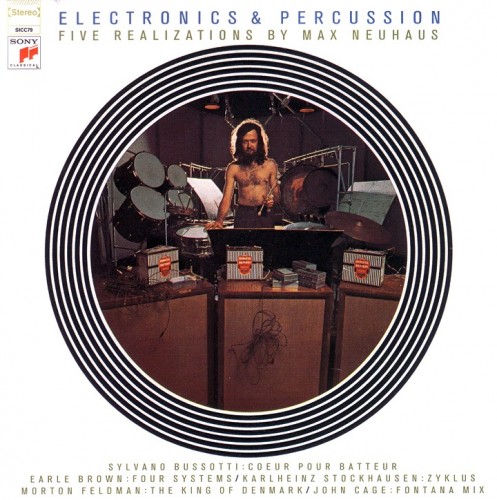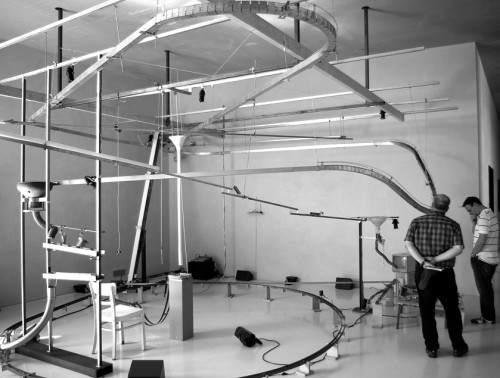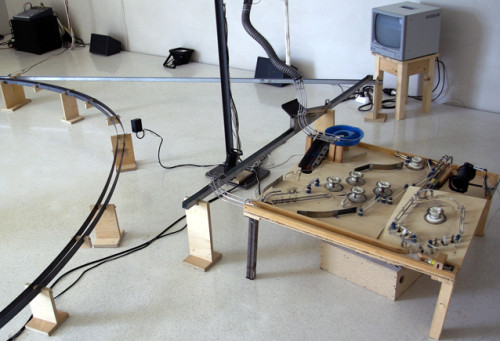Category: unforeseen inductee
Exhilarant Arendt
“In an ever-changing, incomprehensible world the masses had reached the point where they would, at the same time, believe everything and nothing, think that everything was possible and that nothing was true. … Mass propaganda discovered that its audience was ready at all times to believe the worst, no matter how absurd, and did not particularly object to being deceived because it held every statement to be a lie anyhow. The totalitarian mass leaders based their propaganda on the correct psychological assumption that, under such conditions, one could make people believe the most fantastic statements one day, and trust that if the next day they were given irrefutable proof of their falsehood, they would take refuge in cynicism; instead of deserting the leaders who had lied to them, they would protest that they had known all along that the statement was a lie and would admire the leaders for their superior tactical cleverness.”
― Hannah Arendt, The Origins of Totalitarianism
Celebrating the 50th Anniversary of Triad Radio
 March 31, 1969. It was a Monday and I’m pretty sure that I wasn’t listening to the first broadcast, but I’m pretty sure that, being 10 years old and already an adventurous radio listener during that time, I probably found it very soon in the weeks afterwards. It pretty much changed my life – both in general musical interests, but also in getting me supremely interested in freeform radio broadcasting which I did on-air for thirteen years. Later, I picked it up again: “narrowcasting” from a desktop setup as well as a regular weekly show that still runs on Wednesday nights.
March 31, 1969. It was a Monday and I’m pretty sure that I wasn’t listening to the first broadcast, but I’m pretty sure that, being 10 years old and already an adventurous radio listener during that time, I probably found it very soon in the weeks afterwards. It pretty much changed my life – both in general musical interests, but also in getting me supremely interested in freeform radio broadcasting which I did on-air for thirteen years. Later, I picked it up again: “narrowcasting” from a desktop setup as well as a regular weekly show that still runs on Wednesday nights.
Learn more here.
“The class which has the power to rob upon a large scale has also
the power to control the government and legalize their robbery.”
—Eugene V. Debs
“It is not enough, citizens, to have destroyed the factions, it is necessary now to repair the evil that they have done to the country.”
• Louis Antoine de Saint-Just
Vito defunctio
Political Curren(t)cy
Finnegans Wake, Page 46:
“Small wonder He’ll Cheat E’erawan our local lads nicknamed him…
… So snug he was in his hotel premises sumptuous
But soon we’ll bonfire all his trash, tricks and trumpery…”
chantal akerman: film like breath
pincushion socialism
At its core, Socialism calls for social ownership and control of the economy. That means that either the State or the workers or in some instances, both, own major sectors of the economy. Socialists believe that this model allows for basic services to be provided more cheaply and fairly. It is NOT to be confused with communism – a political ideology where there is a total absence of government which, ironically, many of the detractors on the political right seem to favor.
Democratic Socialism is the combination of a political democracy and a socialist or mixed economy. Although Bernie Sanders is advocating for economic reform, he doesn’t want to do away with Capitalism entirely. He believes that the government should pay for health care and higher education, but those services should be provided by a combination of the public and private sector.
Historically, Socialism has been a polarizing term in American politics, but as more people are turning a deaf ear to all of the fear mongering coming from the corporate media, they are also becoming more educated on the facts – especially the reality that we already have wonderful, rather quotidian, socialist aspects to our American way of life: our highway system, public libraries, police and fire departments, the postal service, garbage collection, and dozens of more positive ways that our lives are impacted by a functional Socialism – ways that we take for granted each and every day.
According to recent Gallup survey, 47% of Americans would consider voting for a Socialist as President and according to the PEW Research Center, younger people are also more likely to favor Socialism with nearly half of Americans, 29 years old and younger, having a positive view of Socialism.
艾未未重新获得护照
HONG KONG — The Chinese artist Ai Weiwei said he was given back his passport on Wednesday after being barred from traveling abroad since he was detained in 2011 in Beijing.
“Today, I received a passport,” he wrote onTwitter and Instagram, along with a photograph that showed him holding the burgundy-colored Chinese travel document.
警方夺走西藏喇嘛丹增德勒骨灰
BEIJING — The Chinese police forcibly seized the ashes of a prominent Tibetan monk whose death in prison this month set off public demonstrations and raised suspicions about his treatment while incarcerated, supporters of the monk said on Tuesday.
Geshe Nyima, a cousin of the revered religious figure and community leader, Tenzin Delek Rinpoche, 65, said that four Tibetans transporting his cremated remains to his hometown, in the southwestern province of Sichuan, for Buddhist funeral rites were held at gunpoint by Chinese police officers last Thursday night in the town of Luding and forced to hand them over.
“The ashes were taken back and not given to the family,” said Geshe Nyima, speaking in a conference call from Dharamsala, India, where he lives in exile.
“Police said that they would throw the ashes into the nearby river. The four people don’t know what happened to the ashes.”
Taatquaouinan luxury
A short excerpt from a recording I made of a long train ride –
a train almost entirely filled with Syrian refugees – into München.
Hours later, we, as a group, were greeted by a large number of
security personnel and media.
Uppalapu Srinivas
Lately, I’ve been making too many playlists honoring musicians who’ve recently died,
but whether it’s been Joe Sample, Jackie Cain or Kenny Wheeler, they’ve lived
a pretty good long life – 75 to 86 years old. Now, I’m coming to terms with the
death of a master musician who was only 45 years old – a man who just kept
getting more amazing and whom I expected to be able to give the world at
least 40 more years of his amazing musicianship.
In the eighties, I remember sitting in a favorite Indian restaurant and being
gobsmacked by what I was hearing over their sound system. Who was this
seasoned professional player of this stringed instrument? When I was shown
the cover of the cassette, I wondered why this child was featured on its cover.
Was this the performer’s young son? …and why would he feature the child over
himself. My quest began to find more recordings – going to every Indian food
and/or video store I could find to grab up more of this wonderful food for the soul.
Since those days, I’ve had the chance to see Uppalapu “Mandolin” Srinivas –
simply known as U. Srinivas – a couple of times in concert. When he last
arrived in town in May of last year, I couldn’t make it to the show (and figured
that he’d be back again in a couple of years – he was only 44, so yes, he was
bound to come back, right?), but I had told a friend who was a member of the
local Indian music society that he really should go see him for his first time.
You may know his work with Remember Shakti and Michael Brook
plus various wonderful soundtracks. He made nearly 50 recordings and now
Srinivas is gone – complications that arose from a liver transplant the day before.
YouTube is filled with his work, and here‘s a Spotify link to start
you off on your journey if you haven’t yet discovered him.


(photos: Hindustan Times)
I’m spending quite a bit of time with him now:

ON⁻OFF
Input-Output lurk least hazards
max neuhaus: medium into the domain
In the late ’60’s, I was introduced to the artistry of Max Neuhaus through one of his most well-known recordings called Electronics & Percussion: Five Realizations. On that LP, he created masterful versions, as a percussionist, of works by Morton Feldman, Earle Brown, Karlheinz Stockhausen,
John Cage and Sylvano Bussotti.
When he died in February, we lost not only a fine percussionist, but a pioneer of sound art
(though this was a term that he eschewed), public art, and sound installation.
(thanks to the Max Neuhaus estate)
Brandhorst
My friend Mark Polscher introduced me to a new museum in München that opened in May.
The Museum Brandhorst is in the Kunstareal – close to the Alte and Neue Pinakothek museums as well as the Pinakothek der Moderne – and is near the university district. It’s a two-story structure that features 36,000 vertical ceramic louvres in 23 different coloured glazes. Except for one room, all of the inside galleries have white walls and Danish oak flooring for a neutral look. There’s an abundance of Warhol and Twombly and a selection of Beuys, Nauman, Richter, Hirst, a.o.
Right down the street from the Miles Basie club…
collinear “house of god” comeback
My friend Hermann-Christoph Müller introduced me to a wonderful museum in Köln. Kolumba is the art museum of the Archdiocese of Cologne. The architecture combines the ruins of the late Gothic church St. Kolumba, the chapel Madonna in the Ruins (1950), a unique archaeological excavation (1973-1976), and a new building designed by the Swiss architect Peter Zumthor.
In one of the rooms, they had a Rube Goldberg-esque construction that produced all kinds of sounds with balls rolling around and dropping down on trays, etc. Known as Marble Maze, it’s creator – Manos Tsangaris – referred to it as a “three-dimensional automatic musical machine as a model of perception.” The best part wasn’t sitting in the chair in the middle and being surrounded by these sounds; it was the fact that being an old church redone as an art museum, there was a large amount of natural reverb inside – especially the last room in the exhibition which had the highest walls – and you could hear the mechanics of this installation gradually blur into a sound mass as you walked away from it while exploring the outer areas of the museum. Sounds would fade in and out and overlap – no distinct beginnings or endings – which made it beautifully contemplative. I sat in this last room for half an hour. Audio of the walk-through can be heard below.






















